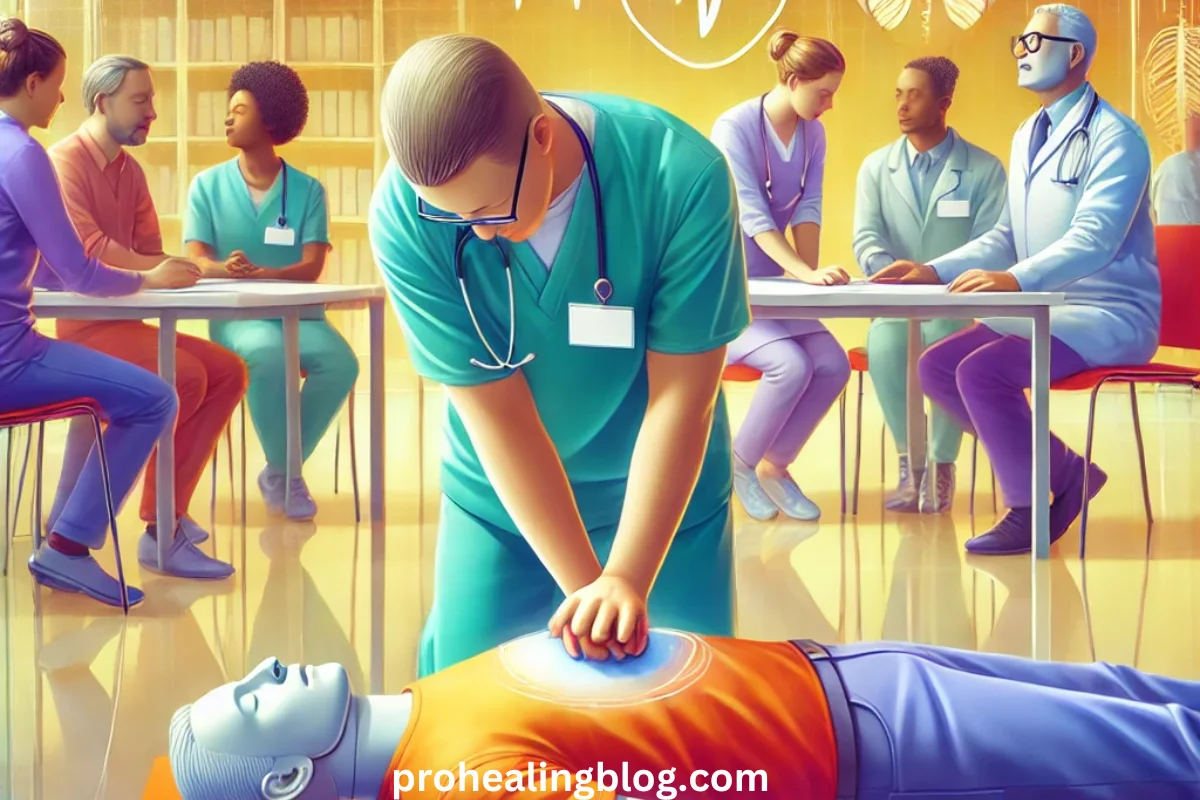Cardiopulmonary Resuscitation (CPR) is a critical skill that has saved countless lives. It’s a technique used during cardiac emergencies when the heart stops beating or a person stops breathing. In such situations, CPR can keep oxygen-rich blood flowing to the brain and other vital organs, thereby bridging the gap until professional medical help arrives. Without CPR, the chances of survival dramatically decrease, making it a crucial intervention in emergencies. lets learn about why is cpr considered a life saving technique”
In this blog, we’ll explore not only why CPR is a life-saving technique but also how it works in practice. Additionally, we’ll discuss why it’s essential for everyone to learn, as knowing CPR can make the difference between life and death in critical situations. Moreover, by learning CPR, you can be prepared to act quickly when faced with an emergency, ultimately increasing the chances of a positive outcome. Furthermore, CPR knowledge empowers individuals to help others, contributing to safer communities overall.
What Is CPR?
CPR stands for Cardiopulmonary Resuscitation. It is an emergency procedure performed when someone’s heart stops beating (cardiac arrest) or they stop breathing. This technique involves:
- Chest Compressions: To manually pump the heart and maintain blood flow.
- Rescue Breaths: To provide oxygen to the lungs.
CPR is simple to learn and can be performed by anyone, even without medical training.
See Also: Sound Healing: Ancient Practice Meets Modern Wellness
Why Can CPR Be a Life Saver?
The heart and brain need a constant supply of oxygen to function properly. Without oxygen, brain cells begin to die within minutes, which can lead to irreversible damage. When the heart stops, blood flow halts, and oxygen delivery ceases, further jeopardizing the body’s vital organs. However, CPR plays a crucial role in this situation—it keeps blood circulating, thereby buying precious time. This temporary circulation ensures that the brain and other organs continue to receive oxygen until advanced medical care can intervene and restart the heart. Consequently, CPR is not just a critical procedure, but it also provides a lifeline, giving the person a better chance of survival while awaiting professional treatment. Ultimately, CPR serves as a bridge between the onset of cardiac arrest and the arrival of emergency medical help.
Here’s how CPR saves lives:
- Restores Blood Flow: CPR manually pumps blood to vital organs.
- Prevents Brain Damage: It provides oxygen to the brain, reducing the risk of permanent damage.
- Bridges the Gap: CPR sustains life until a defibrillator or medical help arrives.
Why Does CPR Save Lives?
CPR acts as a substitute for the heart and lungs. While it doesn’t restart the heart, it creates artificial circulation, delivering oxygen to vital organs. As a result, this reduces the risk of death and complications. Moreover, studies show that performing CPR immediately after cardiac arrest can double or even triple the chances of survival. In fact, the sooner CPR is administered, the higher the likelihood of a positive outcome, emphasizing its critical role in saving lives.
How Does CPR Work?
CPR combines chest compressions and rescue breaths. Let’s break it down:
1. Chest Compressions:
- Push hard and fast in the center of the chest.
- Compressions mimic the heart’s pumping action, pushing blood through the body.
2. Rescue Breaths:
- Tilt the head back, lift the chin, and give two breaths.
- These breaths provide oxygen to the lungs, which is critical for survival.
Why Timing Matters:
Every second counts during cardiac arrest. Without CPR, irreversible damage can occur in 4-6 minutes.
Is CPR a Life-Saving Measure?
Yes, CPR is one of the most effective life-saving measures. It’s often the first line of defense in cardiac emergencies.
CPR Statistics:
- About 350,000 cardiac arrests occur outside hospitals each year in the U.S.
- Immediate CPR can increase survival rates by up to 300%.
- Only 46% of cardiac arrest victims receive CPR from a bystander.
These numbers highlight the importance of knowing and performing CPR.
See Also: The Ultimate Guide to Shoulder Workouts Build Strength and Size
Why Is It Important to Learn CPR?
1. Saves Lives:
Knowing CPR means you can act quickly in an emergency.
2. Increases Confidence:
Trained individuals are more likely to step in and help during a crisis.
3. It’s Easy to Learn:
Most CPR courses take only a few hours and are widely available.
4. You Could Save a Loved One:
Most cardiac arrests occur at home. CPR training could help you save a family member.
How Does CPR Keep the Victim Alive?
CPR sustains life by keeping blood and oxygen flowing. It reduces the risk of organ failure and brain death.
Without CPR, cardiac arrest victims face almost certain death. Performing CPR immediately can significantly increase their chances of survival.
What to Do If Someone Needs CPR
- Check for Responsiveness: Shake the person and shout, “Are you okay?”
- Call for Help: Dial emergency services (911 in the U.S.).
- Start CPR:
- Perform 30 chest compressions.
- Give 2 rescue breaths.
- Use an AED: If available, follow the instructions on the Automated External Defibrillator.
Why Can’t CPR Restart the Heart?
CPR doesn’t restart the heart. It only keeps the blood flowing. A defibrillator or advanced medical treatment is needed to restore a normal heartbeat.
This is why calling for help and using an AED are critical steps.
How to Learn CPR
Learning CPR is simple and accessible. Here’s how you can get trained:
- Enroll in a Course: Organizations like the American Heart Association (AHA) offer CPR certification.
- Online Training: Some platforms provide online CPR courses.
- Community Workshops: Local hospitals and fire departments often host free CPR training sessions.
CPR and Painless Survival
CPR and Specific Populations
Cardiopulmonary Resuscitation for Children:
- Use one hand for chest compressions.
- Be gentler with rescue breaths.
Cardiopulmonary Resuscitation for Infants:
- Use two fingers for compressions.
- Cover the infant’s nose and mouth with your mouth during rescue breaths.
Cardiopulmonary Resuscitation for Elderly Individuals:
- Treat gently but prioritize effective compressions.
CPR Myths and Misconceptions
Myth 1: You Can Hurt the Person
It’s better to perform CPR imperfectly than to do nothing. A cracked rib is preferable to death.
Myth 2: Only Professionals Can Perform CPR
Anyone can learn and perform CPR. Basic training is all you need.
Myth 3: Mouth-to-Mouth Is Always Required
Hands-only CPR is effective in many cases, especially for bystanders.
See Also: Best Lower Back Stretches to Relieve Pain
Final Thoughts: Why Is CPR a Life-Saving Technique?
CPR is more than just a skill—it’s a tool to save lives. Whether it’s a stranger in a public place or a loved one at home, knowing CPR empowers you to act decisively in critical moments. In fact, having this knowledge can make all the difference when every second counts so learn why is cpr considered a life saving technique?
The simplicity of the technique, combined with its life-saving potential, makes it an invaluable skill. Moreover, the ability to perform CPR can give you the confidence to step in and help, even in high-pressure situations. By learning CPR, you’re not just gaining knowledge; you’re becoming a lifeline for someone in need, offering hope when there may seem to be none.
Therefore, take a CPR course today to know why is cpr considered a life saving technique? After all, your decision to learn could be the difference between life and death for someone tomorrow. By being prepared, you could save a life and make a lasting impact when it matters most.






